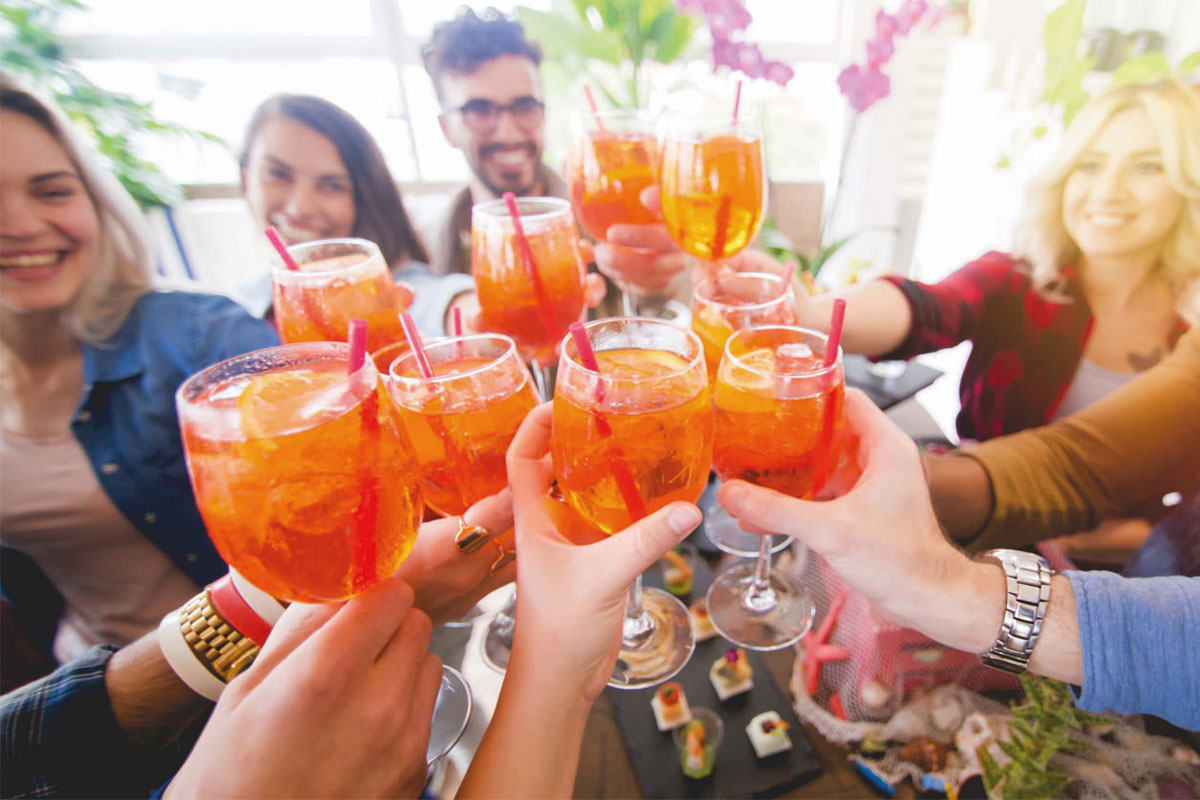Consumers are increasingly mindful of alcohol and calories.

WHETHER it’s consuming fewer calories, less alcohol – or both – many pub, bar and restaurant customers are becoming more mindful of what they are drinking.
While this shift could be considered a challenge for hospitality venues, and particularly wet-led outlets, drinks companies have insisted that the trend towards moderation and lower-calorie products represents a significant opportunity for operators.
The number of adults in the UK choosing not to drink alcohol is increasing, according to Hugo Morrissey, founder of Nuisance Drinks, with the trend-driven largely by younger consumers.
“Around 21% of British consumers now don’t drink alcohol, and this number is one in three amongst 18 to 24 year olds,” said Morrissey.
“These numbers have risen dramatically over the last ten years.
“In a society shaped by image consciousness, which is largely driven by social media platforms, it seems that diet and the gym are now playing a far greater role amongst young people than alcohol once did.
“Therefore, many consumers are incredibly conscious as to what they are putting into their body and there’s an increasing shift to find delicious, guilt-free, low-calorie drinks which keep one feeling fresh and healthy whilst offering a premium, adult alternative.”
Ruth Jones, the co-founder of hard seltzer brand Twisted Sisters, agreed.
She said that consumers are “definitely more aware now of the calories in drinks”.
“Over the past couple of years there has been a definite shift towards healthier living in general and people are definitely keen on adopting this mindset in their social lives too which has seen a rise in lower calorie and low/no-alcohol options.”
The impact on the market is not inconsiderable, with figures supplied by Campari showing sizeable increases in volume and value, pre-pandemic.
A spokeswoman for the brand owner, which recently introduced Italian non-alcoholic aperitivo Crodino to the UK, said: “The no and low-alcohol market continues to go from strength to strength, representing a huge growth opportunity for pubs, restaurants and bars, with both volume and value growing ahead of the total market – up 38.6% and 39% respectively pre-lockdown.”
With this level of growth it’s no surprise that there has been a raft of launches from drinks companies – both new and established.
“Looking ahead there is still a tremendous opportunity for growth in the low and no beer category,” said Tim Clay, managing director of Asahi UK.
“Such is our faith and commitment in low and no Asahi Europe International have pledged that 20% of our portfolio will be low and no focused by 2030.
“We are not unaware of the work needed to fulfil this pledge but with our continued commitment to innovation to drive the low and no beer category forward and ever-growing desire amongst consumers to moderate and move toward a balanced lifestyle, particularly amongst younger generations, we envisage low and no will play not just a substantial role in our portfolio but the whole beer category in years to come.”
Despite the growing popularity of the category, companies acknowledged that there has been something of a stigma attached to it in the past.
But the quality of contemporary products is able to rival their full-strength, higher-calorie counterparts, they said. And with similar quality comes similar margins.
“The sector has advanced incredibly,” said Collette Cumbes of Celtic Marches.
“With a huge section of the market not drinking or attempting to reduce intake, it is a key moment to embrace the movement.
“Margins on the products may vary depending on the processes used to craft the drinks.
“It is often assumed that low alcohol = cheaper option.
“This is far from reality but licensees should trust in the consumer. Those looking for a better choice of low and no drinks are more likely to appreciate the process and pay a comparable price to an alcohol option.
“The resulting margins should put the venues at ease.”
Jones at Twisted Sisters echoed this, saying premium low and no alcohol and lower-calorie options “allows licensees to still see similar profit margins as to what they see on their full alcoholic range”.
Licensees can do their part to stress the quality of the products, said Morrissey at Nuisance Drinks. He said that non-alcoholic cocktails, for example, “need to be seen as the same quality and standard as their alcoholic counterparts”.
“The term ‘mocktails’ sounds slightly cheap and cheerful,” said Morrissey.
“Instead, they should be seen as premium and we believe they should sit on the same menu as the alcoholic cocktails with ‘AF’ signalling that they are alcohol-free (just as a vegetarian dish might do on a menu).”




















